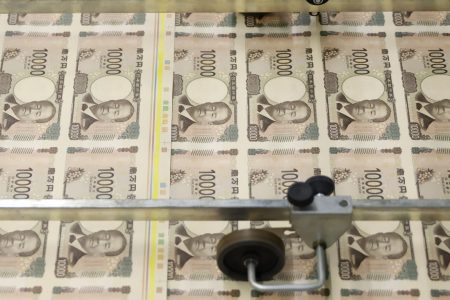Japanese 10,000 yen banknotes arranged in Tokyo, Japan, on Saturday, Oct. 7, 2023.
Shoko Takayasu, Bloomberg | Bloomberg | Getty Images
Despite dovish comments from Japanese Prime Minister Shigeru Ishiba leading to a sharp plunge in the yen, market analysts aren’t budging from their Bank of Japan policy expectations for the longer term.
The yen slid to as weak as 147.15 against the U.S. dollar on Wednesday, after Ishiba told reporters that the current economic climate does not require an additional rate increase. The currency clocked its largest single-day decline since June 2022 during the session.
“I do not believe that we are in an environment that would require us to raise interest rates further,” Ishiba said on Wednesday after meeting with Bank of Japan Governor Kazuo Ueda — who leads the rate-setting committee at the bank. The prime minister’s comments marked a drastic change in tone compared with the messaging on his recent campaign trail.
“This shift is particularly notable as the prime minister has been a long-time critic of past Liberal Democratic Party administrations, including the late Abe Shinzo’s, whose ‘Abenomics’ was associated with monetary easing,” said Stefan Angrick, senior economist at Moody’s Analytics.
“My money is still on a rate hike in October,” Angrick told CNBC, noting that the latest BOJ meeting minutes from September still held an optimistic view of the economy.
The futures market on Thursday implied less than a 50% chance that the BOJ could hike by 10 basis points before the end of the year, according to LSEG data.
On Thursday morning, BOJ board member Asahi Noguchi said that the central bank should continue its accommodative monetary policy for the time being. He noted that it will take a while to change the public’s perception that prices will not increase significantly in the future.
We would not rule out another rate hike by the end of this year, but if not, the BOJ will hike by early 2025.
Mazen Issa
fixed income strategist at MRB Partners
The Bank of Japan kept its benchmark interest rate steady at “around 0.25%” — the highest rate since 2008 — in September. On July 31, Japan’s central bank lifted its benchmark rate from its previous range of 0% to 0.1%. This came after the BOJ in March raised its policy rate for the first time in 17 years.
While BOJ board members were split over the future path of interest rates at the September meeting, the board noted that Japan’s economic activity and prices had been “developing generally in line with the Bank’s outlook.”
The BOJ is expected to next review interest rates on Oct. 30-31, when it will also provide updated quarterly forecasts for growth and prices. Another meeting is scheduled for December.
Ken Matsumoto, macro strategist at Crédit Agricole CIB, said the markets were expecting the BOJ to raise the policy rate again at the upcoming October meeting with the economic and inflation outlook on track. But, he said, Ishiba’s announcement Monday for a General Election…
Read More: Yen plunges but currency experts not rethinking Japan’s rate policy

